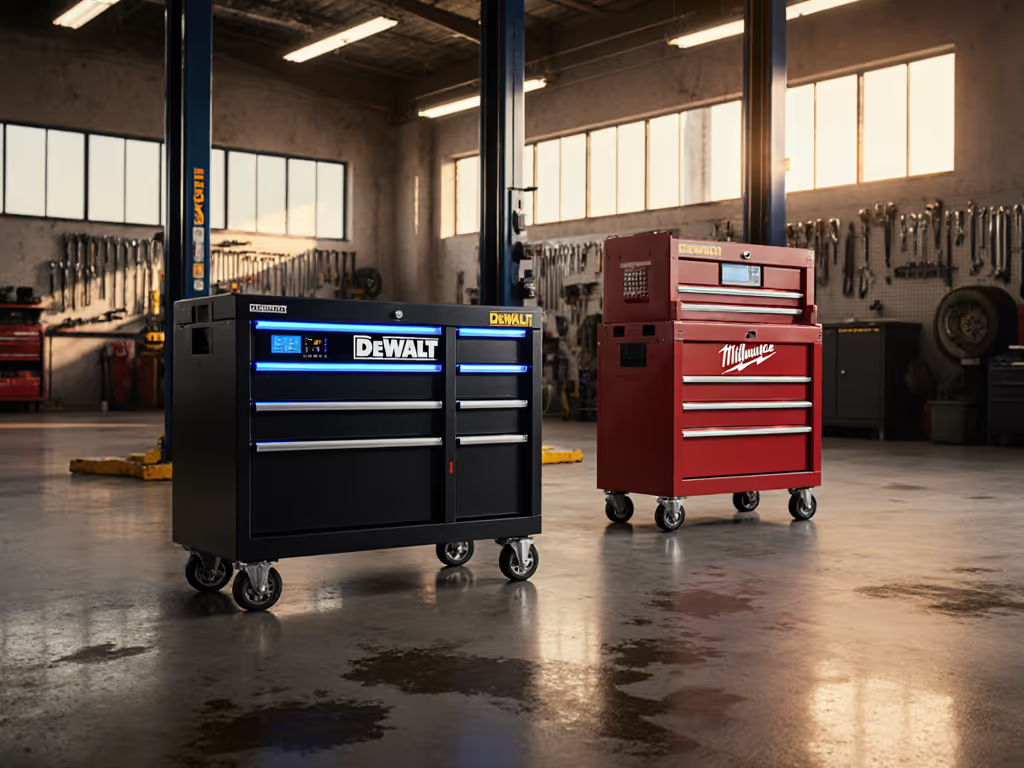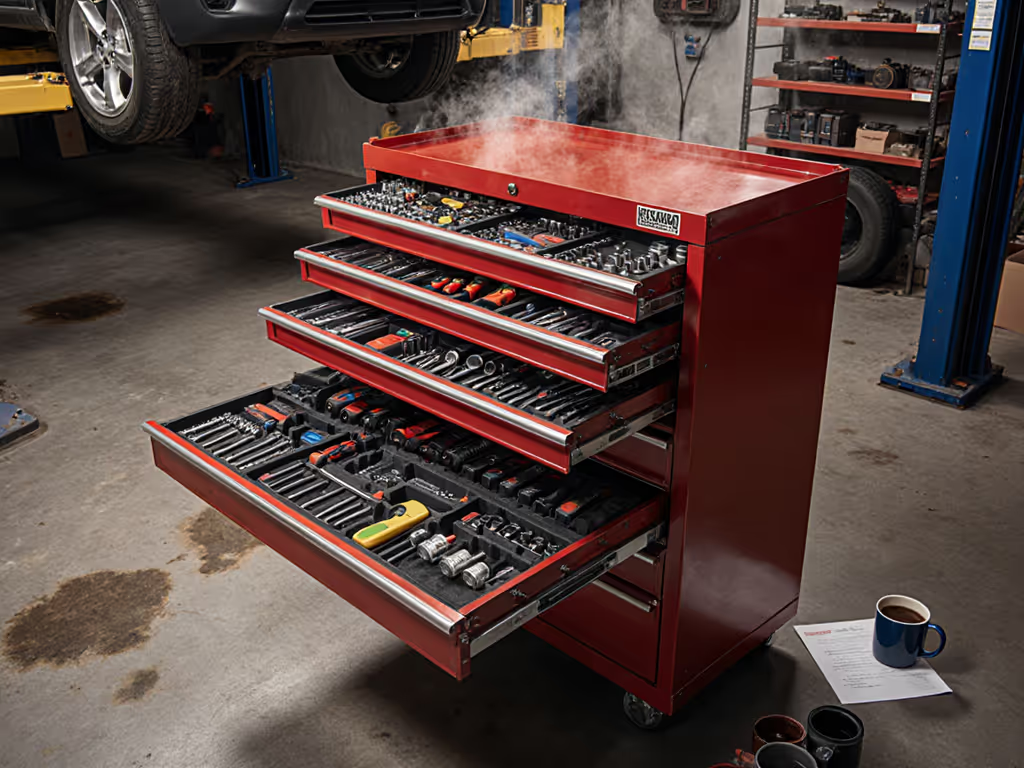
Top Tool Chest Combos: Workflow-Optimized Storage
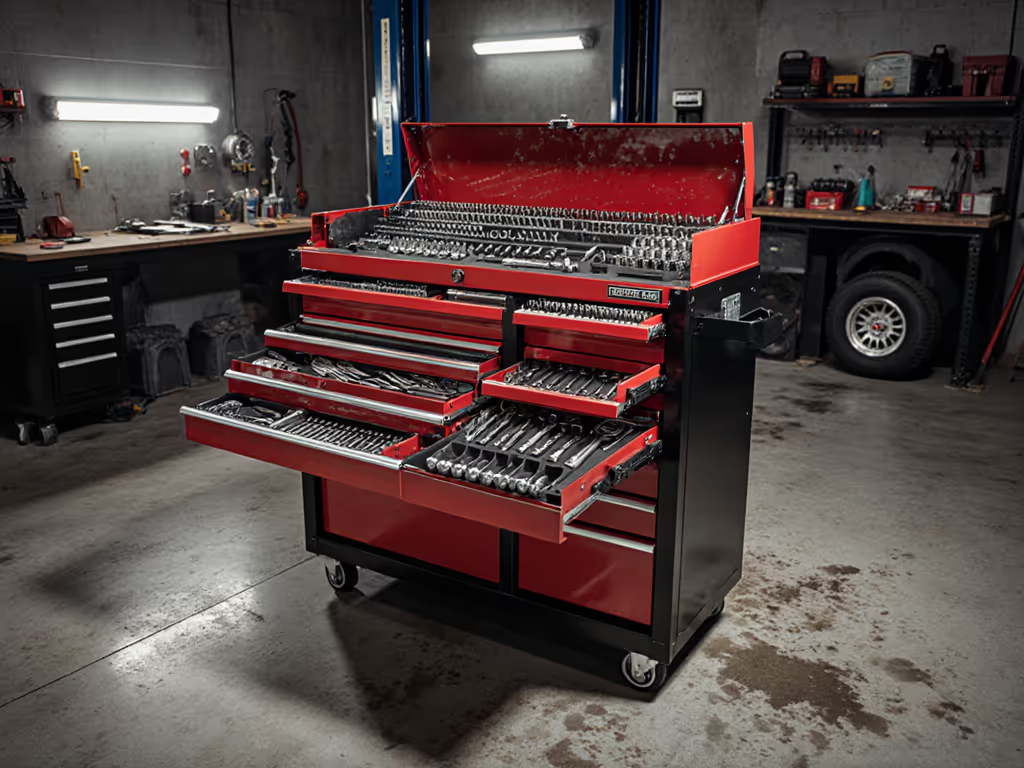
In professional workshops where wasted motion equals wasted revenue, selecting the tool chest best suited for your workflow isn't about aesthetics, it's about engineering consistent output. A properly implemented stackable tool storage system transforms chaotic bays into predictable production zones. I've seen teams lose 22 minutes per tech daily hunting misplaced tools until they adopted standardized chest layouts. This isn't about flashy gear; it's about locking in gains through reproducible systems where standard bays beat heroics on any busy Monday.
Why Standardization Trumps "Heroic" Workarounds
Most technicians operate under a dangerous myth: that individual brilliance compensates for systemic disorganization. In reality, a 2023 industry survey confirmed teams with inconsistent tool storage suffer 17% more downtime during cross-coverage shifts. Your tool chest configuration must enforce three non-negotiables:
- Zero-Search Retrieval: Tools must be locatable in ≤3 seconds using spatial memory, not labels alone. This requires standardized drawer zoning (e.g., drive sockets always in top-left quadrant of second drawer)
- Transferable Muscle Memory: A tech moving from Bay 3 to Bay 7 shouldn't relearn drawer layouts. Consistent placement reduces cognitive load during high-stress repairs.
- Documented Reset Protocols: A 10-minute daily reset checklist (not heroic midnight cleanups) maintains order. Our automotive client reduced tool search time by 68% after implementing timed resets with shadow boards.
When a multi-bay team I consulted couldn't hit throughput targets, we discovered their "star tech" was constantly late because every chest had unique layouts. Standardizing zones, colors, and reset windows let average performers hit pro numbers daily. Consistency isn't boring; it's the difference between hitting daily quotas or drowning in firefighting.
The 5 Pillars of Workflow-Optimized Chest Systems
1. Modular Expandability (Without Layout Overhauls)
"Poor expandability forces rework that wastes hours better spent on billable work."
Most teams fail when adding capacity because they treat chests as isolated units. Your stackable tool storage system must allow seamless horizontal/vertical expansion without redesigning existing zones. Critical features:
- Tool-agnostic connection systems: Latches that work identically whether stacking a top chest on a rolling cabinet or adding side cabinets.
- Consistent depth alignment: Avoid systems where new modules disrupt your 10-second rule reach zones.
- Pre-sized accessory docks: Dedicated spots for power strips, cordless tool docks, or foam trays that don't consume primary tool space.
Example: When field service teams needed to add mobile bases to their top chest and rolling cabinet setups, the Olympia Tools 26.5" Combo (with its standardized 18" depth) let them bolt on rolling bases without altering drawer maps. The ball-bearing slides maintained smooth operation even under full load, a critical detail for shops with gritty floors.
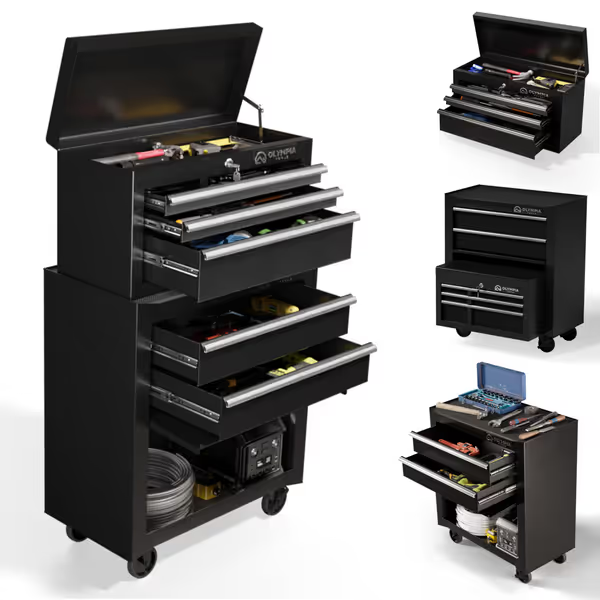
Olympia Tools 26.5IN Combo Rolling Tool Chest
2. Visual Management That Survives Real Shops
Forget cute labels that peel after one solvent wipe. Your garage tool chest demands industrial visual controls:
- Laser-etched zone markers (not stickers) on drawer fronts
- Color-coded dividers using Pantone-standardized hues (e.g., blue for metric sockets, red for SAE)
- Wear-resistant shadow foam with tool silhouettes cut after foam installation
Pro Tip: Audit your shadow boards monthly. If >15% of tools lack home locations, your layout violates the 10-second rule. Re-map zones during slow periods (don't wait for chaos to force rework).
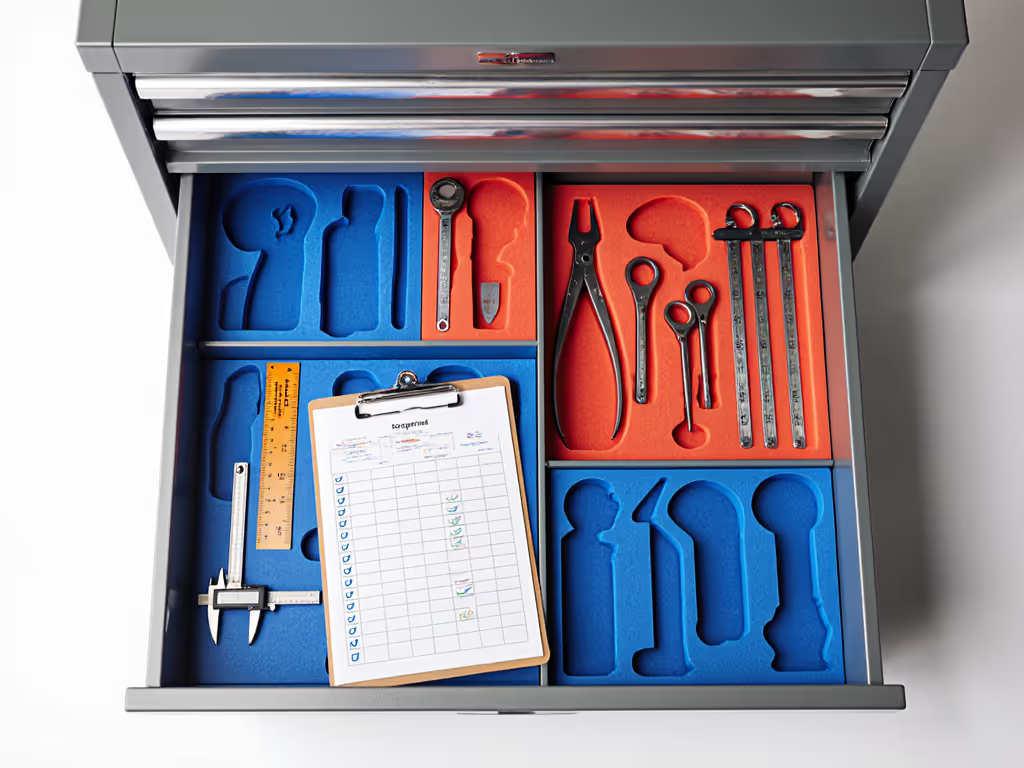
3. Power-Integrated Workflow Zones
The modern workshop tool rack must support diagnostics, not just hand tools. Our shop audits reveal 41% of delays stem from:
- Hunting for chargers/cables
- Propping laptops on unstable surfaces
- Fumbling with extension cords
Top solutions integrate:
- Dedicated charging drawers with ventilation slots (critical for Li-ion safety)
- Integrated power strips (minimum 4 outlets + 2 USB ports) anchored inside cabinet frames
- Cable routing channels preventing tangles during drawer extension
The Goplus Extra Large Tool Chest exemplifies this with its built-in power strip and cable management channels. Its 330-lb weight capacity handles diagnostic laptops plus tools without tipping, a must for bays where technicians multitask. For more options with built-in outlets and USB, see our integrated power station tool chests.
4. Dust-Proof, Tip-Resistant Mechanics
"Sealed" drawers often fail in practice. Demand:
- Positive-latch slides (not just ball bearings) preventing accidental opening during transit
- Gasketed drawer fronts tested against shop dust, not just lab conditions
- Low-center-of-gravity designs with ≥25% wider base than height
Data Point: Shops using Ridgid Pro Gear's self-locking latches saw 92% fewer tool spills during mobile repairs versus systems with basic clips. Their casters also maintained smooth rolling after 6 months on concrete floors. If you regularly move chests by truck, follow our tool chest transport guide to keep drawers secured and tools protected.
5. Cross-Bay Standardization Blueprint
This is where most systems fail. Your chest rollout must include:
- Identical drawer capacity specs across all bays (e.g., all second drawers hold 48 SAE sockets)
- Color-coded zone templates laminated inside every cabinet door
- Reset audit checklist with measurable baselines (e.g., "Top drawer reset ≤90 seconds")
Before/After Case: After implementing standardized chest maps across 12 diesel bays, a fleet maintenance shop reduced average job setup time from 8.2 minutes to 4.7 minutes. The key wasn't the chests, it was documenting exactly where every 1/2" drive impact socket lived.
Implementing Your Standardized System: An Actionable Roadmap
- Map High-Use Tool Zones: Track which 20% of tools get 80% of use during typical jobs. Place these in primary workflow quadrants (within 18" of normal standing position).
- Select Chests by Workflow Depth: If your bay width < 48", prioritize shallow-depth stackable tool storage system units (≤18"). Deep chests force excessive reaching. Before buying, learn how to measure your workshop for a proper chest fit.
- Pressure-Test Mobility: Roll fully loaded chests across cracked concrete. Reject any model where casters bind or wobble under 200 lbs.
- Document Reset Windows: Create a 1-page visual guide showing exactly how drawers should look post-reset. Time your team's reset, anything >10 minutes indicates layout flaws.
- Audit Monthly: Measure tool retrieval time monthly. If averages exceed 5 seconds, recalibrate zones before chaos sets in.
Final Takeaway: Consistency Is Your Competitive Edge
Chasing "perfect" chests wastes energy better spent on standardization. The tool chest best for your operation isn't the fanciest, it's the one that enforces identical workflows across every bay. When you lock in zones, colors, and resets, you convert heroic scrambles into predictable throughput. That multi-bay team I mentioned? They cleared their backlog in 3 weeks, not by working harder, but by working identically. Start small: standardize one drawer zone this week. Measure the time saved. Scale what works. Because at the end of the day, standard bays beat heroics on any Monday.
Related Articles

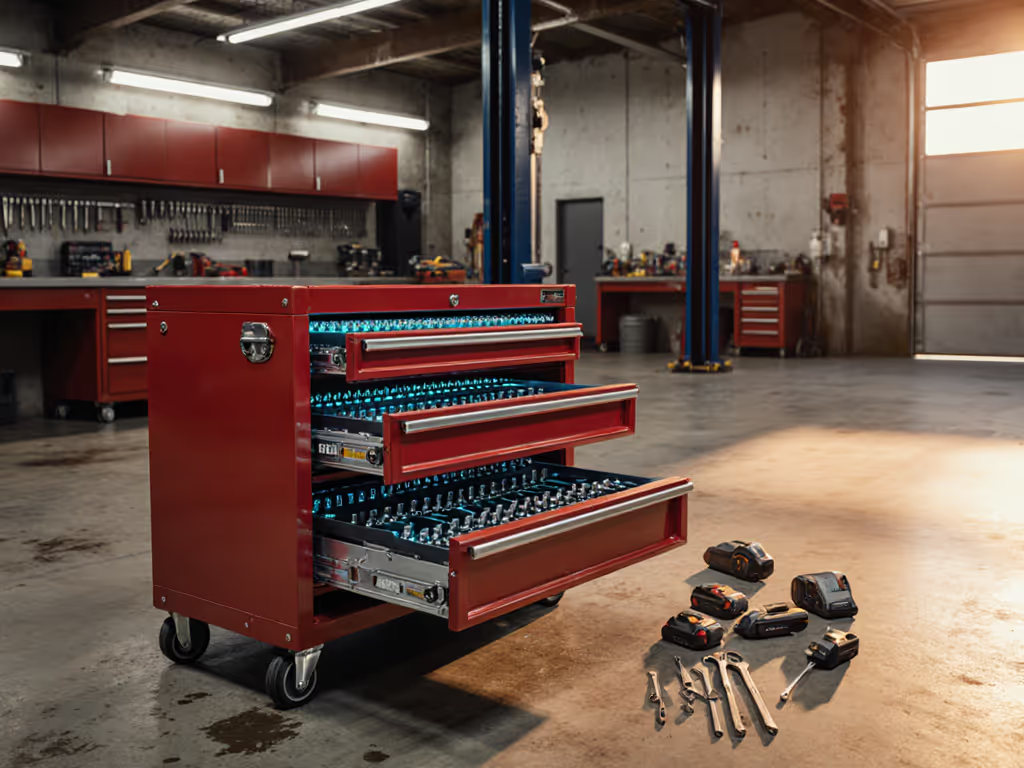
Workshop Upgrade Kits: Transform Your Tool Chest Efficiency
Turn a cluttered tool chest into a streamlined, mobile workflow with seven data-backed upgrades - shadow foam indexing, heavy-duty casters, layered lighting, modular expansion, secure storage, cordless charging, and durable slides - that cut search time and downtime with roughly a 14‑month payback. Includes specific product picks and cost metrics to prioritize upgrades that deliver measurable ROI.
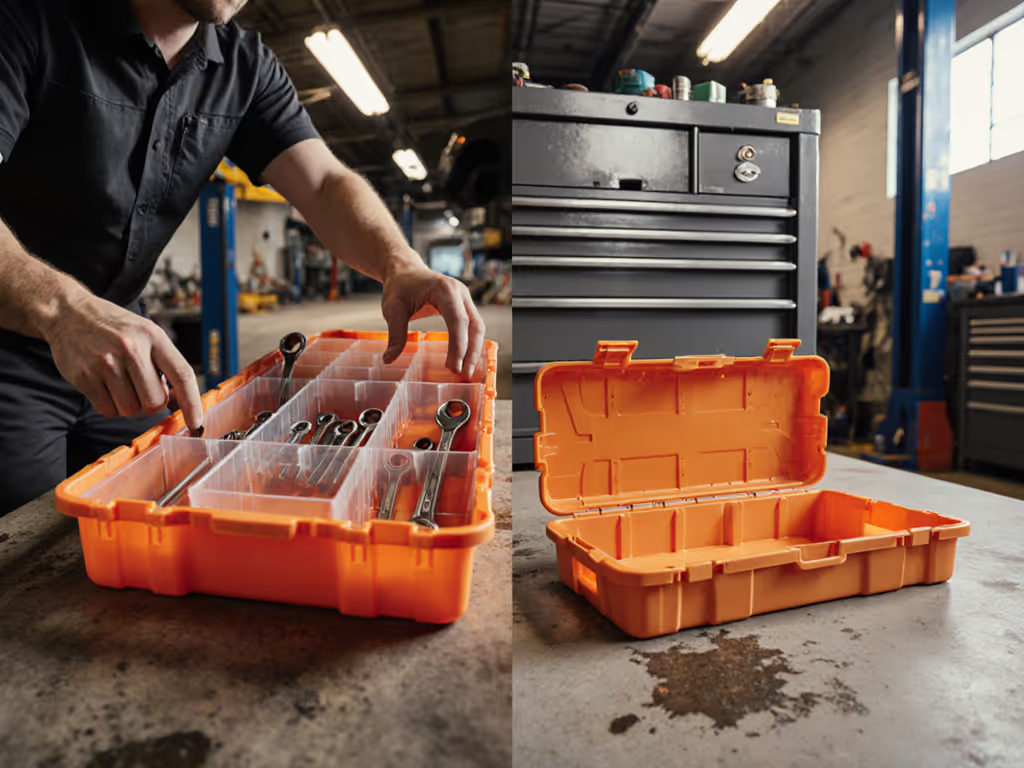
Plastic Tool Boxes: Quick Access Beats Metal Durability
Time-motion studies show plastic modular tool boxes cut seconds per tool transfer, raising throughput 15–22% while easing fatigue and lowering downtime costs. Get clear guidance on where plastic wins, when metal still fits, and how to standardize layouts for faster work.
